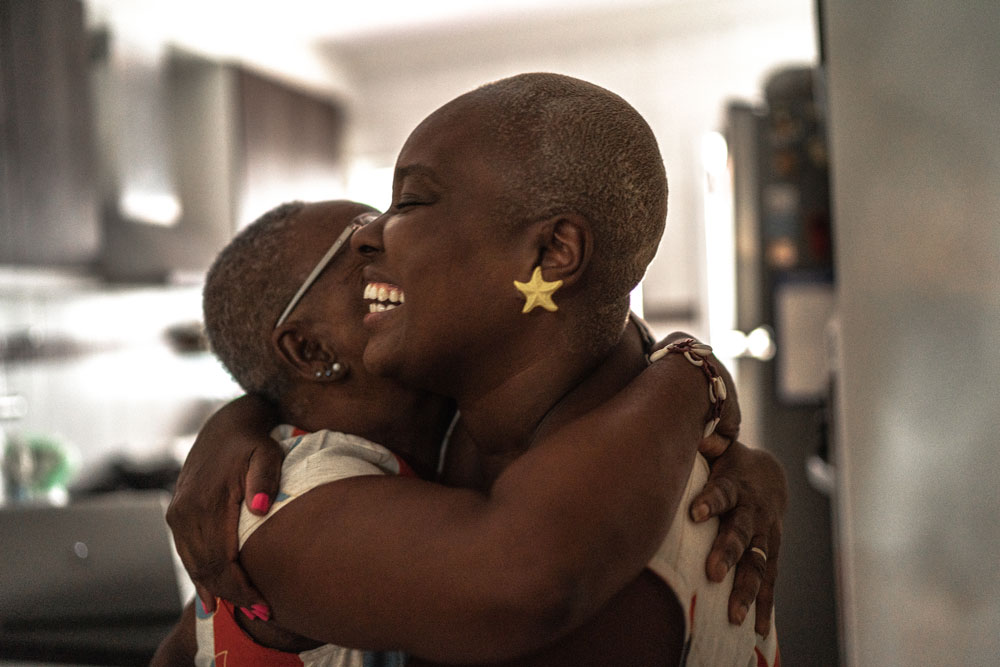Patient-guided oncology trials: Why the patient perspective is essential to success
Patients are experts on their lived experiences, making them indispensable partners in drug development. As sponsors and CROs work to address unmet needs through new therapies, the patient’s voice should inform every aspect of the process.
Nowhere is this more important than in oncology research. Enrolled patients, typically having failed to respond to first- or second-line treatment, are very sick and often very scared. If they are willing to trust us with their health care, we can honor that trust by designing studies informed by patient input that will better address their needs. By using a patient-guided approach, sponsors and CROs can pursue the outcomes that matter most to patient populations.
A process for understanding
At Parexel, we follow a four-part approach to understanding and integrating the patient perspective. We begin with discovery, delving into existing research. This includes epidemiology exploration, real-world evidence analysis, and literature review — a process we can streamline through the power of artificial intelligence.
Next, we conduct in-depth interviews and focus groups, asking patients for input on our discovery findings. In addition to patients, we’ll talk with care partners and advocacy group leaders. We then confirm the validity of our qualitative data through quantitative research: widely distributed surveys developed through rigorous scientific methodology.
Finally, we report on our findings, sharing what we’ve learned with the patients who enabled the research and the study teams who will benefit from it.
Within the oncology community, numerous advocacy organizations support both patients and the research efforts that can benefit them. Parexel is fortunate to collaborate with many of these groups to evaluate treatment needs, refine protocols, select study endpoints, gather real-world evidence, and reach as many patients as possible with information about clinical trials that could change the course of their cancers. Advocacy groups are instrumental in finding new therapies, and Parexel works closely with them to ensure that patients are heard and served throughout clinical development.
Amplifying the patient’s voice
Patient input should guide clinical research goals. Sponsors need to know: Can this therapy make a significant difference to a patient in their daily circumstances? Does this treatment address the outcomes that patients care about most? What barriers might patients face when using this product?
The patient’s voice must also inform the study design. Based on patient input, study teams should refine a protocol to remove unnecessary burdens, asking patients which elements could hinder enrollment or participation. In an oncology study, such hurdles might include intrusive procedures, inadequate financial reimbursement or compensation, a high number of required visits, or a lack of support for care partners who accompany patients to appointments.
What we learn from patients should also be shared in an actionable way with study site staff. At Parexel, we can map the potential patient experience from launch to completion, helping sponsors and sites understand what patients may experience visit by visit. Since this map is tailored to the study, we can point out, for example, which procedures could result in greater anxiety among participants or which visit might be the most challenging, creating greater risk for withdrawals. Fully appreciating the patient experience allows clinicians and support staff to be more compassionate and effective in their interactions and helps study teams create solutions to potential barriers.
What we need to know — and how we use what we learn
Only patients can tell us which outcomes matter most to them, so their input is critical to fully identifying unmet needs and determining study endpoints. Because an unmet need is the foundation of a research program, sponsors must understand the patient’s perspective at the earliest stages of the research. This allows sponsors to tailor their products and research processes to the people their therapies will serve.
Early engagement is incredibly important. When we understand the patient perspective from the outset of research, we can:
- Create research instruments that measure the outcomes prioritized by patients.
- Avoid changes in scope by identifying and mitigating risks before a study begins.
- Strengthen the impact of patient education and outreach materials.
- Improve recruitment and retention.
- Develop operational strategies that address the needs of all stakeholders — including patients.
- Collect the patient experience data that will inform regulatory decision-making.
- Create reimbursement strategies using the patient insights that are most meaningful to payers.
We have also found that patient-guided studies help build positive reputations. When people feel acknowledged and supported during a study, they can become advocates for clinical research in patient communities. . Reputation also matters for sites where research professionals know that a patient-guided approach can improve enrollment and execution.
A standard for success
Given the complexity of oncology research and the gravity of a cancer diagnosis, the patient’s perspective takes on special importance in cancer treatment studies. For oncology patients and their families, the decision to participate in a clinical trial can be overwhelmingly difficult. Their health, livelihoods, family responsibilities, and daily routines are all at risk of disruption. Entering a clinical trial can seem like another unknown. By letting patient input guide our research, we can develop therapies that address critical unmet needs — and we can study those therapies in ways that make patients feel comfortable and appreciated.
A recent survey study found that patient perceptions of the benefits of oncology trials impacted trial retention. More than 86 percent of respondents said that being treated respectfully was an important benefit of participating in an oncology trial.
Patient-guided research is one way we can foster an environment of respect. In asking patients what they need most and then addressing those needs — both through the development of a therapy and through the thoughtful design of a clinical trial — we demonstrate that we value a patient’s expertise, opinions, and role in our shared work. No new therapies can be developed without patient contributions, making the patient perspective central to any study’s success.
This article is part of a series about trends and opportunities in advancing treatments for oncology. The next article in this series will examine Making Cell and Gene Therapy More Accessible in the Treatment of Solid Tumors.
Connect with us
At Parexel Biotech, we’ve integrated our wide breadth of services across all our business units. That gives us the speed and flexibility to deliver anything you need right when you need it, with all your services coordinated by a single point of contact. Together, we’ll integrate scientific, clinical, regulatory, and commercial considerations early on and throughout development giving your treatment the surest pathway and to mitigating risks. Let Parexel Biotech connect every step of development with you. Get the flexibility and adaptability it takes to impact patient lives. Connect with us today.
About the authors
Stacy Hurt ensures that patients and caregivers have a seat at the table to translate their lived experiences and recommendations into improvements in the drug development process at its earliest stages. She brings a unique perspective as a stage IV cancer survivor, caregiver to her son who has an ultra-rare genetic chromosome abnormality, and a global patient advocate. Formerly Parexel’s Patient Ambassador, Stacy uses her voice to represent patients everywhere, even when they are not in the room. Her highly sought-after insights shape strategies for clinical trial design and delivery.
Kristina Reeder is responsible for developing and executing strategies to enhance patient involvement in clinical research studies at Parexel. She collaborates closely with cross-functional teams to ensure ’”patients’ needs and perspectives are prioritized throughout the study lifecycle. Furthermore, Kristina plays a crucial role in building relationships with patient advocacy groups and implementing initiatives to improve patient enrollment and retention in clinical trials.
Nichola Gokool has spent her career in the healthcare industry, specializing in medical communications. She is passionate about driving innovation in patient and physician communication activities and has led patient-centric initiatives, including the formation of the Parexel Patient Advisory Council. As a member of the Parexel team since, Nichola focuses on strategic development and implementation of global and regional medical communications programs, training programs, publications, and patient engagement programs.






